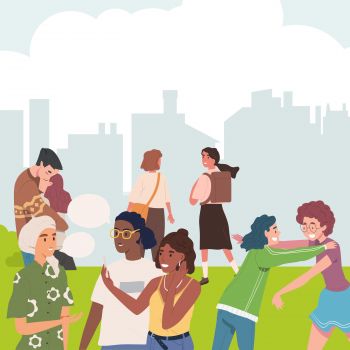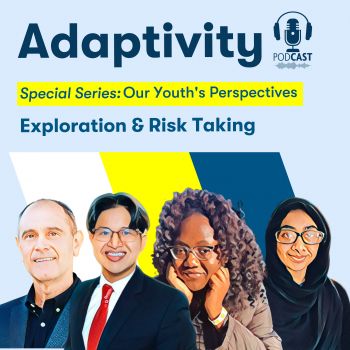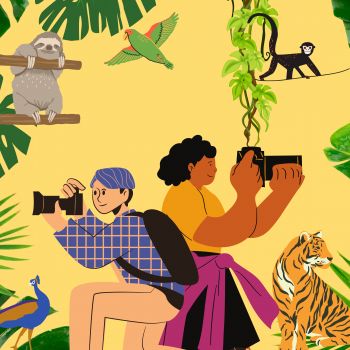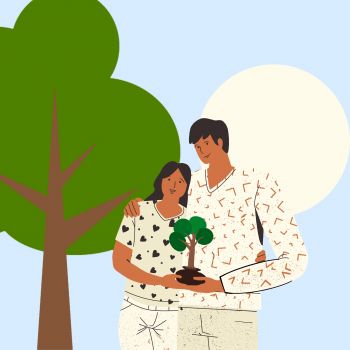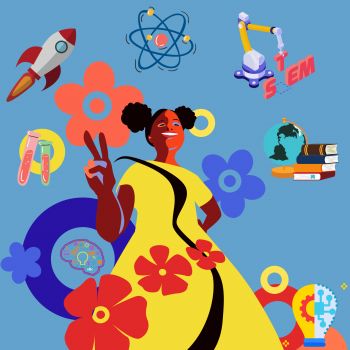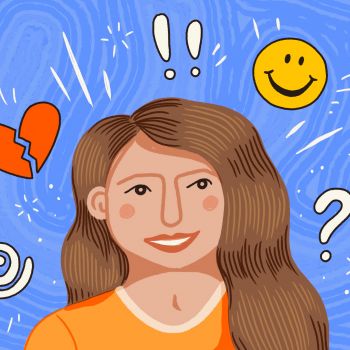Ron Dahl Adolescence is a time when we develop our own identities, separate from how our parents see us as children.
Tomi Dugbo I had on purple glasses, because my parents convinced me that purple was my favorite color.
Ron Dahl As teenagers, we explore who we are and start making decisions that may thrill and surprise us. Adolescence is a time of uncertainty and heightened sensitivity when we are busy establishing our values, goals and identities.
Michael Nguyen Throughout these past 18 years of my life, I saw no other path than just going to medical school, becoming a doctor, but now, I’ve made a decision that will forever impact my life, and that’s joining the army.
*****
Ron Dahl I’m Ron Dahl, founding director of the Center for the Developing Adolescent, and this is Adaptivity, where we explore the science of adolescence, untangling misconceptions about the years between childhood and adulthood.
We explore new insights into the rapid cognitive, emotional, and social changes that are happening during these years. And how the developing adolescent brain is primed to promote healthy and adaptive learning.
This is the third episode of a thee-part series called ‘Our Youth’s Perspective,’ brought to you by members of the Center’s Youth National Scientific Council on Adolescence.
*****
Tomi Dugbo Hi, my name is Tomi Dugbo, I’m 18 years old, and a member of the Youth National Scientific Council on Adolescence, or YNSCA, and I’m here for the final episode of our three-part series, Our Youth’s Perspective, to talk about developing values, goals, and identity. But before we get into this interesting topic, I would like to introduce my lovely co-hosts, who are also on the YNSCA, Michael and Mahisa.
Mahisa Mannan Hey everyone, it’s me, Mahisa!
Michael Nguyen Hi again, this is Michael!
Tomi Dugbo I know we all remember those times when we were younger where we had little-to-no care in the world on how we dressed or presented ourselves for society to see. All we cared about was going on about our day and leaving our appearances up to our parents. Now for a little bit of a throwback time, I have in front of me a picture from when I was in second grade. I had on purple glasses, because my parents convinced me that purple was my favorite color, and my hair in a high ponytail even though I would never do that now, because I’m insecure of my humongous forehead.
I guess what I am trying to say is that our parents have such a great impact and influence on ourselves that when we finally try to navigate to find our own values, goals, and identities, it can be a bit difficult at times. I am just now discovering that my favorite color is actually gray, not purple. Whether it is small things like that or bigger things such as personal identity and planning your next steps in life, what I’ve learned most is that it’s a never-ending process and it doesn’t have to be a bad thing for your parents to have an influence on the things you do.
Now to turn it to you guys, are there any moments in life where you started to feel insecure about certain aspects of yourself that you never particularly noticed before?
Mahisa Mannan Well, I remember when I was younger, right, whenever people or like my family members, or my friends at the time, whenever they took a photo of me, I didn’t really smile a lot, or like with my teeth showing. I was more like tight-lipped or something, because I always got told that I looked weird with my teeth showing, so it kind of made me insecure.
I have two sisters, right? And, I was always compared to them, in my life, right? I won’t lie: they are very beautiful, and I praise their looks all the time. Like, they wear makeup, while for myself, i didn’t ever wear makeup. I never developed an interest in it. And so, because of that, I was more natural looking. And so people always compared me to them, because like, “How could you be related to them? You look nothing like them,” you know? “Are you sure you’re not adopted or something?”
Like, I’ve heard those things, you know, and hearing those things really made me insecure about myself, because you know, I didn’t want to change myself just so people could say, “Oh, you look like your sisters,” or whatever, you know? And so, I think that’s where I realized that I shouldn’t have to care about how I look.
Like now, I’m a lot more confident in myself, you know? Like, there’s certain aspects of myself that I really like now, like my hazel eyes, my long hair, um, like the color of my skin, you know. And, like I said earlier, I used to never smile with my teeth showing. Now I always smile with my teeth showing, because I actually like how my teeth look now. so, I think that’s why I felt insecure about myself.
Tomi Dugbo Thank you for sharing, Mahisa. What about you, Michael?
Michael Nguyen Yeah, I think in terms of values, goals, and identity, it’s something I guess a lot of people our age right now currently deal with, and that’s deciding either our major or what we want to do with our lives.
For me, it’s always been pre-set. Like I saw no other path than being a doctor, like going medical. And even when I was younger, I realized that like, yes, that was something that my parents told me, but maybe I wanted to do it, too.
But now that I am in college, and I am making my own decisions, it really is confusing for me, because I have so much academic interests that I never got a chance to explore. Like, I started taking my first computer science class, and I was like, ‘Oh my gosh, this makes so much sense, and I really like doing this.’ Whereas before in high school, I never really had the opportunity to interact with that field, just because I was so focused on doing medically related stuff.
Throughout these past 18 years of my life, I saw no other path than just going to medical school, becoming a doctor and then just retiring. But now, even within the past couple of months, I’ve made a decision that will forever impact my life, that before my sophomore year I had no idea I would do, and that’s joining the army. Like I’m starting to make these decisions now that I know I want to lead. But, it’s confusing sometimes, because it’s something that I’ve never really been able to think about, just because my parents have beforehand set me on this predestined path.
Tomi Dugbo Yeah, I agree that it can sometimes be scary, having your hand let go from your parents. But I think that’s something we have to do, especially as adolescents. We just have to explore on our own and take those risks, and like to develop our own values, goals, and identities. So, I really appreciate you guys for opening up and sharing your stories with me.
*****
Tomi Dugbo And now we are going to talk with Professor Joanna Williams. She’s an associate professor at Rutgers University and the co-director of the National Scientific Council on Adolescence. We’ll hear her own story and the science behind wanting to develop our own values, goals, and identities.
Professor Williams, thank you for joining us. I heard that you have your childhood picture that you would like to reflect on–you know, just a little background story on it.
Joanna Williams Well, I asked my sister to send me a picture or two from like, sort of upper elementary school to middle school time. She sent a choice handful. I have to have a conversation with her about why she selected what are probably the most embarrassing pictures she could possibly find.
But when I look at them, I immediately think about like, like I went immediately to, like, hairstyle. So there’s one picture where I just have this like big, sort of mushroom hair. And I doubt it’s something that I felt comfortable like going out of the house looking like. But I’m curious to remember, like what the context of why did I let somebody take a picture of me looking like that? But it makes me think about, you know, being a younger adolescent in particular and being kind of self-conscious at times about things like my hair, for example.
Tomi Dugbo If you don’t mind me asking, when you were talking about your hairstyle. Was there a particular person who styled your hair or you did it more of yourself?
Joanna Williams So there’s some context there. I grew up in an interracial home. My mom was white and she had four biracial Black children. And she had no idea really how to do our hair. And so my older sister and I, who were two years apart, we spent literally every other Friday we would go to–we called it a beauty parlor back–and get our hair done every other Friday, starting when I was in second grade. And I can remember the pain of my first relaxer and being really mad at my sister for not telling me how much like it hurts to have these chemicals on your scalp. But I remember every two weeks we would go there and get our hair done and every six weeks we would get our hair relaxed. And we weren’t going to the beauty parlor as much by the time I was like fifth grade, sixth grade.
I remember wetting my hair and putting in gel and it becoming a little wavy and thinking, Oh, there’s something to my hair. But you know, people just got their hair straightened. So now I feel like, you know, I really embrace the natural curls that I have. But at the time my like, tried and true was brushing it back into a ponytail.
Tomi Dugbo I definitely understand and relate to those struggles. So when you did start noticing your hair, did you start feeling like you had to do something to take control of it? Like at what age did you start feeling like, I want to do these type of experiments?
Joanna Williams I remember in sixth grade when sometimes when my hair would be straightened, like professionally straightened, I’d have peers who’d want to touch my hair, so white peers who’d want to touch my hair. It’s not that I felt my hair was so different until they were pointing out that like, “Oh, there’s something different about your hair.” I remember having a peer who–my hair was always in like two fat braids was the other hairstyle–and she’s like, “Oh, look, I’m holding your braid, and it’s kind of like staying that way.” So I wasn’t very conscious, but was made conscious by other people that my hair was different from my peers. And, you know, the school I went to, the kind of diversity we had was mostly white students and Black students. So there were sort of two ranges of the kinds of hair that people had.
Tomi Dugbo How do you think those type of experiences that you had relates to the science behind self identity?
Joanna Williams So I think looking back as a developmental scientist, that really is around the time–like fifth grade, sixth grade, there were probably changes happening within me related to puberty. The shift that a lot of young adolescents go through, related to some of the underlying hormonal changes and neurobiological changes often make us a little more sensitive to social information, for better or for worse.
So this idea that, like, I’m hyper aware of what other people are thinking about me and whether you want to or not caring more about what your peers think about you, sometimes, often drawing sort of incorrect conclusions about what your peers are actually doing and what they care about and not realizing they are just as sensitive as you are.
So I think we know from developmental science, particularly around early adolescence, that it’s a time when young people start becoming more attuned to social input. But I think that sometimes intensifies your focus on yourself because it’s like, what are other people–if I’m thinking about what other people are thinking of me, then what am I presenting in those spaces too?
Tomi Dugbo You were talking about earlier like basically how race came into play with your relationship with your hair. So can you expand on how race and ethnicity is like a social status for youth development?
Joanna Williams Yeah, and I can start with kind of a story and thinking about my own experience, again around the same time of middle school, where as we were thinking more intensively and paying more attention to social relationships and social information, oftentimes the issue of like where do we fit in. And so for me, probably about maybe 60 to 70 percent of my school was white and the other 30 or so percent was Black, with a few students from other racial or ethnic groups.
When we moved out of elementary school into middle school, it was the time where there were a lot more social divisions along racial ethnic lines. And so the school cafeteria became this place where it was like, you’d have to look around and figure out where do I fit in? And for some reason, like, we didn’t understand why, or I didn’t understand why it wasn’t as easy as it had been in elementary school where, you know, like you had friendship, little groups and things, but people still like it wasn’t quite as intense as the middle school cafeteria. And so I think from a developmental perspective, part of that awareness of social information is layered with these social identities. And particularly in racially diverse spaces, race can often become a factor that can divide young people.
Tomi Dugbo So, growing up with your parents, you were talking about earlier, your mom had never experienced that with having a different hair type. Were there other things you felt your mom or your dad didn’t understand culturally about you?
Joanna Williams I think part of it was my parents were not biracial themselves. You know, my mom was fully white and my dad was fully Black. So they are coming as, like mono-racial people, but they have four children who are biracial. So we’re in a time and in a town where we’re one of very few, like, mixed race families. So my dad, who’s Black, grew up in Tennessee, was from the south. And we eventually he and my mom made their way to New Jersey, where I grew up. So when I was growing up, my dad often prioritized family and our family last name, my maiden name is Lee.
And he would say things to the extent of like, don’t think of yourself as Black, think of yourself as a Lee, because Lee as a family name was what was like most meaningful to him growing up in this small town. Like you’re a Lee.
People who knew, like people knew each other’s family. So, you know, it was one thing for him to say that, but it wasn’t useful to me at the time. Like, what do I do with that? It matters when I’m with my family, but I can’t be with my friends. And they’re asking me about, well, I’m a Lee, I’m not these other things.
So he was certainly not providing me a lot of like access to information to understand any aspect of my identity, my racial identity. My mom, I think, didn’t necessarily broach the subject when I was like middle school or high school age. It wasn’t until I was in college where she really started engaging in actively being involved in conversations around race. Some of them were happening in my hometown and she just kind of threw herself in and I remember in college she would as Christmas gifts, she would give me books like there was one book written by a white woman who was in an interracial marriage and had a biracial son.
One of the books I often reference is Beverly Tatum’s, Why Are All the Black Kids Sitting Together in the Cafeteria and Other Conversations about Race. I go back to it all the time. It’s been really inspirational in my work. My mom gave me that, like she introduced me to that book. She didn’t provide again any of–in the field, we call it racial socialization. Like she didn’t provide any terminology. There weren’t a lot of conversations about race when I was an adolescent, you know, middle school or high school. But as I was in college and beyond, it started becoming a way that she and I connected in our own relationship.
So I kind of wish in hindsight that through them I had more access to even just the language that I might use beyond the word “mixed.” Like what else might I say about my identity? It really wasn’t until like towards the end of high school and in college, when I met other people who shared this identity and was given access to like the words and vocabulary to really understand my identity.
Tomi Dugbo Professor Williams, thank you so much for taking the time to chat with me about developing values, goals, and identity.
Joanna Williams Thank you for making space for me to talk about this.
Tomi Dugbo And thank you all for listening!
Mahisa Mannan We’re Mahisa, Michael, and Tomi from the Center for the Developing Adolescent’s youth council.
Michael Nguyen And this concludes our three-part miniseries, Our Youth’s Perspective.
Mahisa Mannan Bye-bye!!!
***************
Ron Dahl I’m Ron Dahl, and this has been a special episode of Adaptivity from the Center for the Developing Adolescent.
We’d like to thank Tomi Dugbo, Mahisa Mannan, and Michael Nguyen from the Center’s Youth National Scientific Council on Adolescence for sharing their wisdom with us.
For more on the developmental science of adolescence and the YNSCA, check out our Instagram @develadolescent.
You can also visit us at Adaptivitypodcast.org or share your thoughts through our website.
Our podcast is produced at UC Berkeley for the Center for the Developing Adolescent. Our senior producer is Polly Stryker. Our producer is Meghan Lynch Forder. And our engineer is Rob Speight. A special thanks to Ahna Suleiman and Xochitl Arlene Smola for their facilitation of the YNSCA projects.
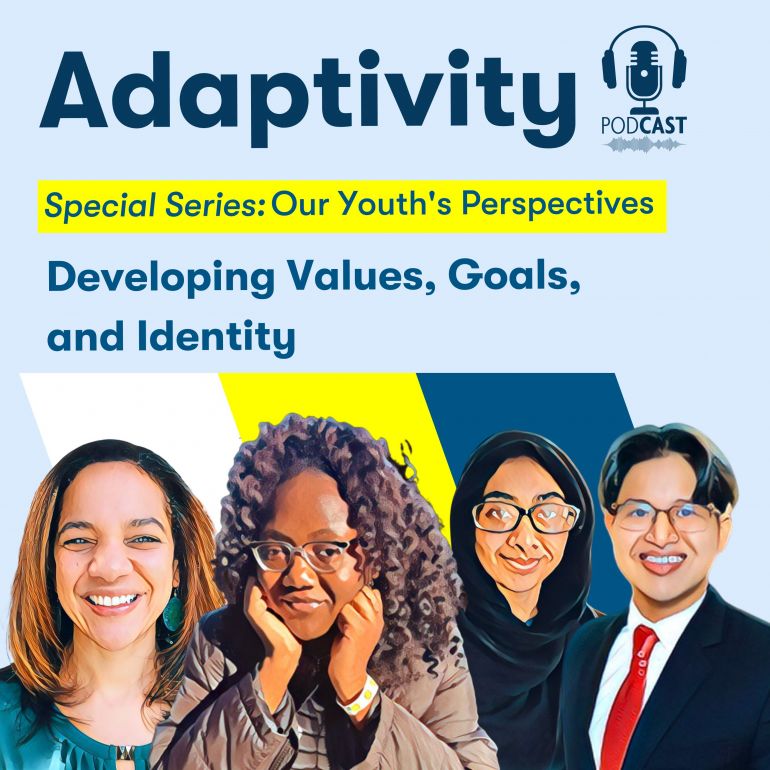
_350_350_80_c1.jpg)
_350_350_80_c1.jpg)
